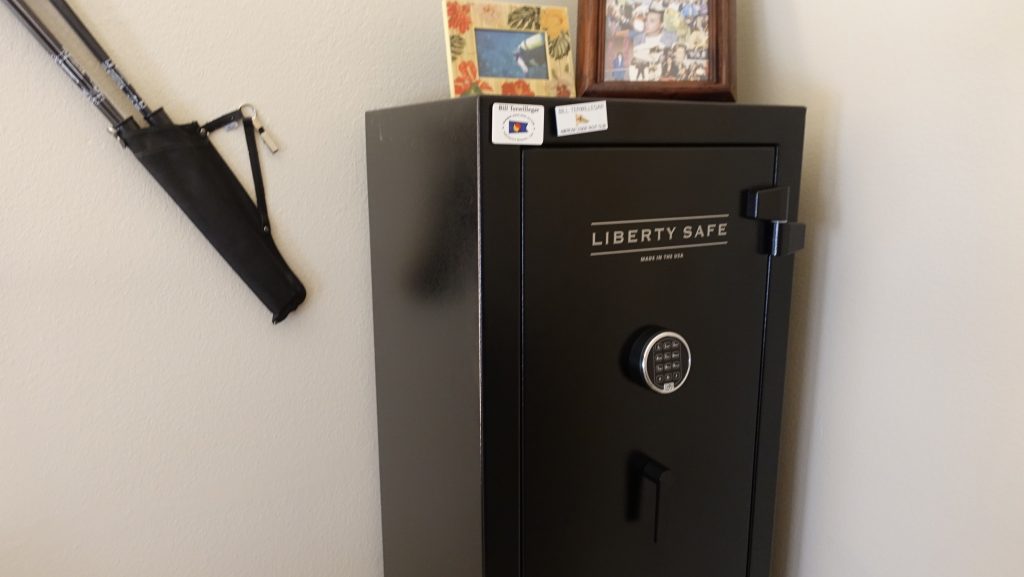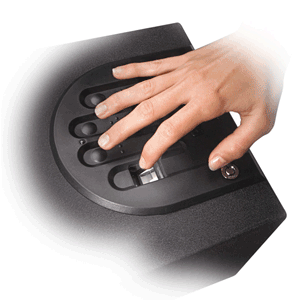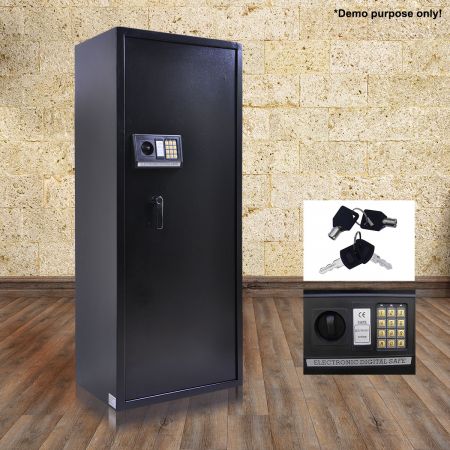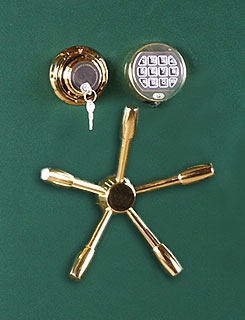Written by R. Ann Parris on The Prepper Journal.
There are lots of ways to produce food, herbs, and medicines, whether we have small properties with just a patio or deck, or large acreage. Our growing options increase all over again with some simple things like freebie pickup shipping pallets, bottles, old furniture, totes, and bricks.
The ability to make use of vertical space can not only increase our productivity per square foot, but in some cases also make gardening easier on the back and knees.
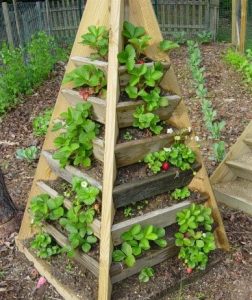
Pro’s & Con’s
With a few notable exceptions, most vertical growing options share drawbacks and benefits. You have to build something, and you have to supply dirt. You also typically have to water more often and provide more fertilizer. However, it eliminates the need for a tiller. It also allows us to make use of limited space with narrow footprints.
In some cases they also provide mobility. Instead of working and amending lousy, compacted yards, and then leaving them behind when we move, we can stack our containers inside lawn bags and take them with us. We don’t have to truly start from scratch at our new home.


That mobility also applies to the learning curve of gardens. It’s a whole lot easier to move some boards and jugs, gutters, buckets or totes of dirt than it is to fill wheelbarrows with a shovel and then shovel again to refill elsewhere if we discover the spot that seemed perfect ahead of spring planting is far too shady come summertime leaf-out. (To say nothing of moving CMU or timbers after a season or two.)
Mobility applies to us as humans, too, although differently. As we age or collect injuries, caring for conventional and even low ground-level beds can become problematic. Bending, lifting, and kneeling can turn even favored pastimes into painful chores. Being able to sit and reach out at hip and rib level or work standing up braced on a cane, crutch, or walker allows us to remain productive even when we can’t handle the heavy lifting of even a dooryard garden.

Big Lifts
Even a “mini” hugelkulture bed can triple growing space in a footprint full-sized hugel beds that stand 4-6’ tall can quadruple grow space. They also have some benefits over the shallow containers we commonly see in vertical gardens. They hold moisture well, and as the internal wood cores and lighter branches, leaves, and straw used in construction break down, they essentially generate both moisture and their own fertilizer.
However, they are pretty much permanent structures. They’ll break down over time, shrinking, and we can absolutely take them apart and transport that fertile compost and soil elsewhere when we’re done, but it’s not as easy as dumping some of the soil from a bucket or tote, or even as easy as bailing a stock tank into heavy-duty bags and moving it.
We can replicate the self-feeding and moisture retention of hugel beds using some commonly available, inexpensive elements. With or without log cores or heavy branches, they have similar lowered daily/weekly maintenance needs. They also still offer the ablity to work upwards of the ground and greatly increase our planting area per square foot.
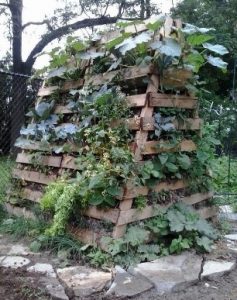
Using scrap lumber or wooden pallets, we can form squares or slope-sided pyramids filled with lawn and tree cuttings, household composting material, and some soil and compost plugs or layers. We can add in tubes and hoses for water, and wire, basket weave, PVC or ABS tubes with holes similar to African keyhole gardens that we’ll add household composting materials to as the season passes.
The downside to wooden materials is that they have a limited lifespan. With treated and thick lumber it can be years in cooler climates, but a single pallet that’s inundated constantly is only going to last a couple years in Deep South or tropical humidity.
That means we need to plot our yards for enough space to rebuild them every few years, or we need to plan to continually reinforce them from the outside year by year – which means they’re going to “grow” outward as we go, but by inches at a time.

Another option are the wide variety of grow towers. They can be purchased or DIY builds as stackable units or single-drum units with planting holes. We can set those up for in-situ composting tubes as well. The steel and plastic or – if we choose – clay or ceramic pots will last longer than lumber and have the potential to be moved around a property or to a new property if we need to.
Pyramid beds, pyramid towers, stair-step beds, and spiral beds are also examples of ways we can increase our square footage in small-scale gardening by working upwards in tiers, the square footage of VISIBLE dirt is the same, but the square footage that plants on each tier are using actually extends UNDER the tier above as well due to shape/depth. By using sturdy construction materials like brick, metal, plastic, or block, they’ll last nearly forever and being smaller, we can relocate them if we need to. Even using untreated wood timbers, they’ll last longer than the hugel facsimiles just because there’s not as much weight pressing outward on them.
We can get equal or greater pyramid tower effects – increased planting space in a decreased footprint of our property – from steepled and angled shipping pallet beds. A salvaged picnic table and collected juice and water jugs can also be arranged into a very productive pyramid.

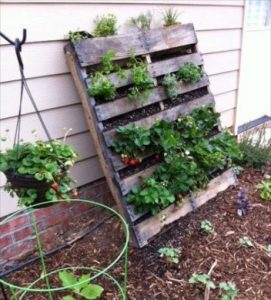
Using the smaller containers, we do go back to the original drawback of many vertical garden expansions: They’ll likely need fertilized more than a ground-plane bed, and they lack capacity to hold much water, especially in relation to the biomass they’re going to support. With vertical pallets especially, we also have to plan ahead with watering, just like barrel planters or grow towers.
If they’re only a couple of tiers high we may be able to soak them as we would any pots, containers, or shallow conventional beds. In most cases we’re going to have to lay in hose or something to act as a funnel or olla irrigation on each tier to ensure that the bottom doesn’t dry out while the top ends up soaked.
Even so, it’s a handy way to get 2-8 times the growing space out of the square footage they occupy, and in many cases they can travel with us to continue easing the back strain of growing some groceries.
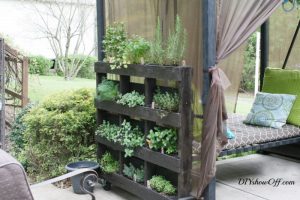
Production Capability
There is one caveat to the containers and small pocket or trench spaces most usually associated with vertical gardens: They’re for veggies, not staples.
There are peppers, cherry and grape tomatoes, and others that are adapted or adaptable to hanging pots and relatively small planters, and we have some larger options like shipping pallets, buckets, and hanging bags that can handle them. There are the cube and pyramid types and the hugel beds and approximations that can handle larger melons. We also now have several dwarf sweet corn with full-sized cobs specifically for container gardens, although they’re less applicable to small-container vertical garden methods.

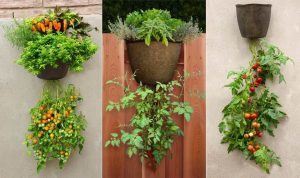
Wheat, griding corn, barley, peas, and dry beans in enough quantity to affect our meals really just don’t work well in most container garden setups and it’s hard to get them enough root and growing space to make them viable for vertical methods.
Even so, there’s value there, and the low footprint required of vertical growing methods is actually a major bonus. We can use very little square footage to produce our nutrient-rich and flavorful veggies, very efficiently many times, saving our horizontal planes for livestock, play/training space, orchards, or crops that do work better by plot, not plant.

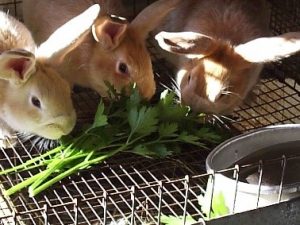
Integrating Livestock
Vertical methods can be used in conjunction with livestock, especially small livestock. The benefits include more than just finding enough space for both a small veg garden and compact livestock. Those benefits scale and apply to people with elbow room and acreage as well.
Even more than green roofs, vertical gardens can also offer shading for those rabbits or hens – especially helpful in hot climates to keep rabbits breeding productively and lower heat stress. We might also arrange planters to help guard the lower edges of coops and hutches from predators that would dig or reach through them, or where they’ll increase the insulation and buffer winter winds. One easy way to accomplish that, is to line our existing fencing with vertical pallet gardens.
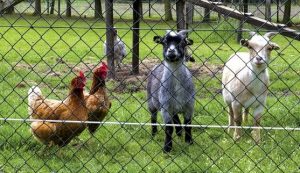

We can source pallets and leave them as-is for as long as we like, and when we have time and supplies, turn those predator and weather barriers into veggie and herb production. While some contortionists and taller livestock will be able to reach around the tops of fences, losses are limited for most and we can simply tailor our pallet gardens so the tops are water catchment or for them.
While pallets have the most applications, we can use any of the tower or hanging-container methods in conjunction with our livestock fences. If they’re spaced tight or boards are arranged between them, it’ll limit “predation” by our adorable stock. Chickens, especially, will be able to reach their necks well past chain link and cattle wire.

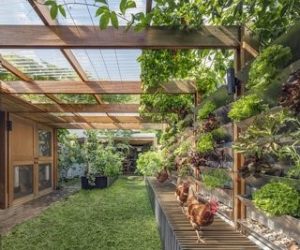
Those gardens can be done inside the coop, hutch or run, too, protected by mesh that allows free feeding but prevents livestock from eating plants all the way to the roots. Essentially, it’s just creating graze boxes, although in this case we don’t have to worry about making sure the plants can tolerate the “heat” of raw manure.
In the case of waterfowl and smaller goats, we can hang crops for us over their reach, but chickens will hop and reach, and by the time it’s out of a standard goat’s reach, we’d have to hook hanging baskets down for harvest and maintenance. However, we can add more productive space to our fence lines with any livestock by turning to shrubs, trees, and vines.
Depending on the type fencing we have, they’ll munch one side until it’s out of reach and we may need to put a barrier up to protect tender starts and smaller vines they can reach through and over the tops of fences. It’s silvopasture – most commonly timber and fodder trees in acres of pasture, but easily manageable even in very small yards and totally applicable for everything in between.

Growing Up, Not Out
Expanding our growing methods to the vertical plane has a lot of advantages not only for preppers in limited space, but also those looking for ease. In some cases, it can also be incredibly helpful for those just starting out, figuring out new properties, and trying to save money. Even for those with acreage, using vertical methods for veggies or greens can help keep those close at hand for harvest and care, as well as create less exposure to predators or livestock.
The narrow footprint also makes vertical gardens valuable for those trying to maintain a lower profile with their survival crops. The efficient use of floorplan means they can be stashed very close to the house, tucked into nooks and crannies, and even used inside, keeping them out of future potential thieves.
There’s a vertical garden method that can help just about any prepper, beginner or old hand, tiny apartment to six-digit acreage. Many can be done inexpensively and with minimal labor, tools, or soil and amendment purchases. With all the options, pretty much all of us can start increasing our food production or make at least some of that production a little easier from the labor aspect.
Follow The Prepper Journal on Facebook!
The post Prepper Gardens – Vertical Expansion appeared first on The Prepper Journal.
from The Prepper Journal
Don't forget to visit the store and pick up some gear at The COR Outfitters. How prepared are you for emergencies?
#SurvivalFirestarter #SurvivalBugOutBackpack #PrepperSurvivalPack #SHTFGear #SHTFBag




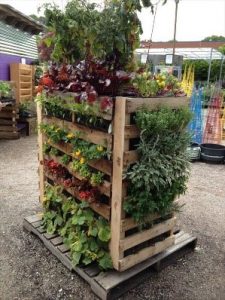
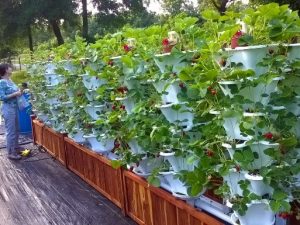
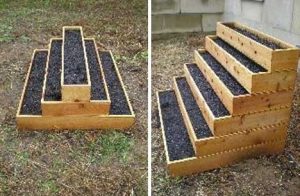
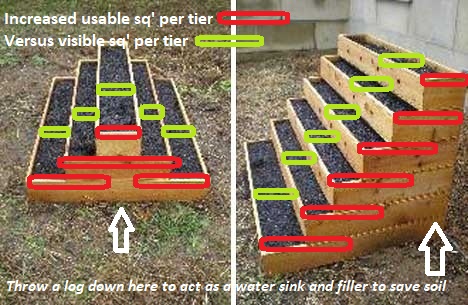
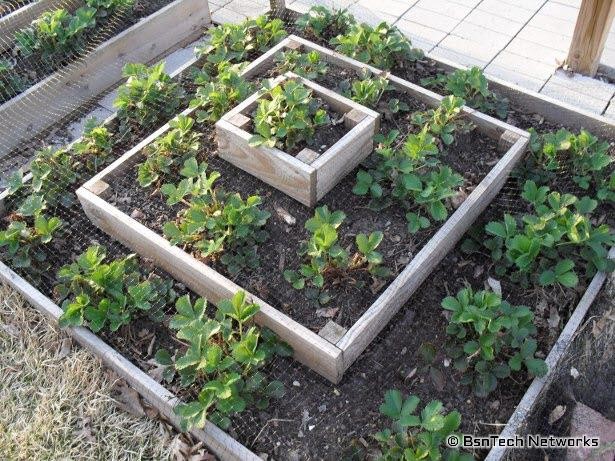
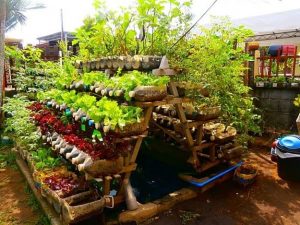

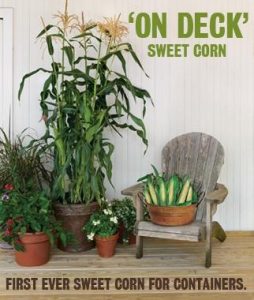
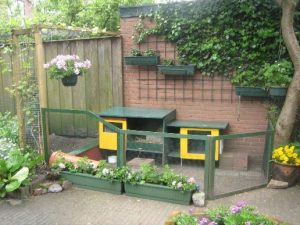
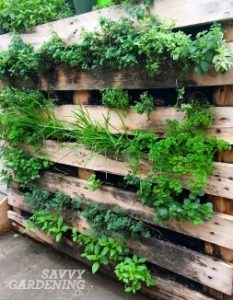





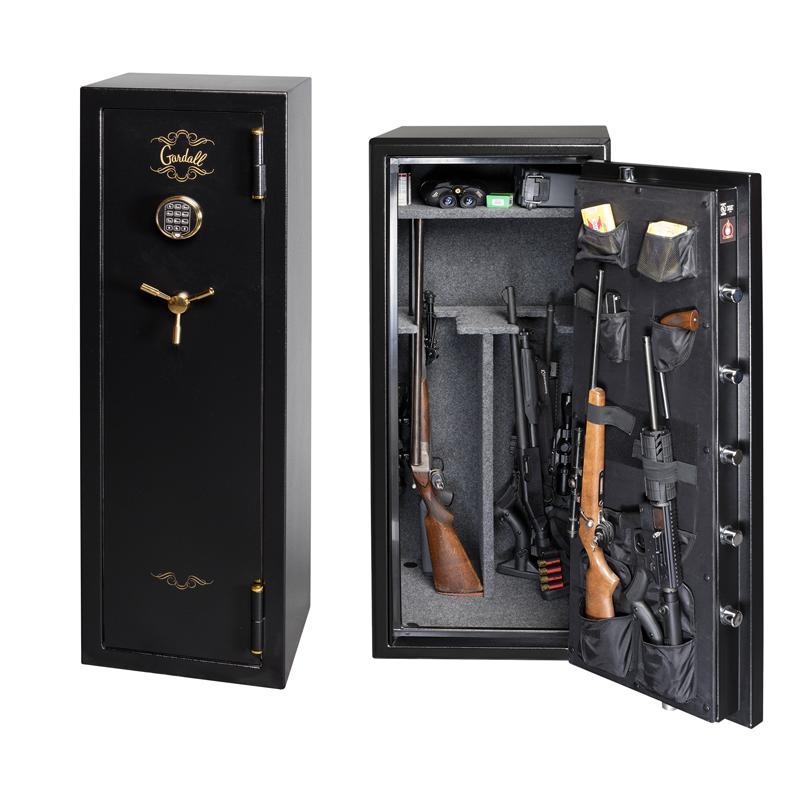

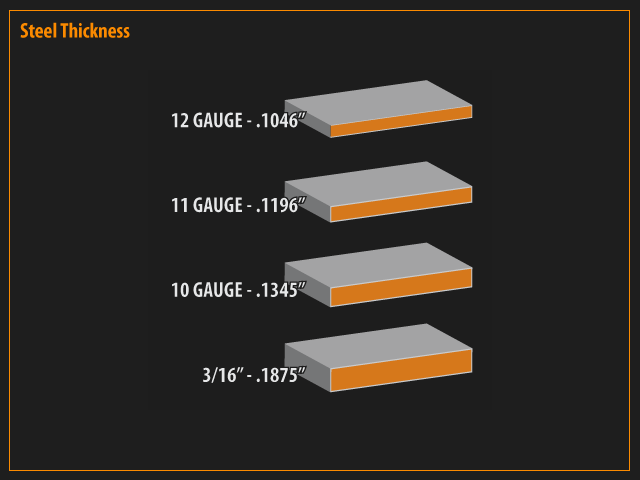
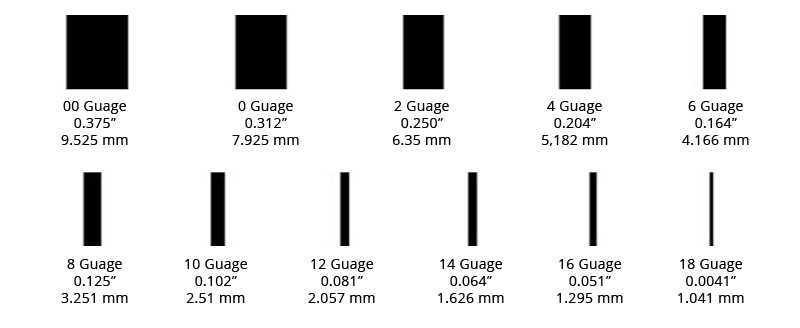


 vs
vs 
